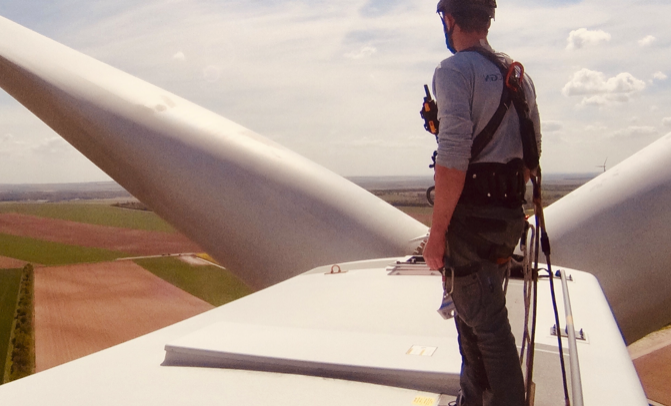- New analysis finds that 480,000 workers need to be trained to deliver onshore and offshore wind market forecasts safely from 2021-2025.
- Training is essential for jobs in construction, installation, operation and maintenance segments of the wind power value chain, and do not cover jobs in procurement, manufacturing (the most labour-intensive segment) and transport.
- Global standardised training is key to ensuring the health and safety of the workforce and safeguarding the wind industry’s sustainability and license to operate in the energy transition.
- South Africa has been included as a high growth market where such training will be needed.
A new report released this week by the Global Wind Energy Council (GWEC) and Global Wind Organisation (GWO) in partnership with the Renewables Consulting Group (RCG) finds that the global wind industry will need to train upwards of 480,000 more people to GWO standards over the next five years to meet global wind power market demand in line with health and safety standards.
These workers will need to be trained to construct, install, operate and maintain the world’s growing onshore and offshore wind fleet, and represents only a fraction of the job opportunities available in the growing wind industry.
“To meet this challenge, we need to prepare now for the workforce of the future, and this means training hundreds of thousands of workers across the world to be part of one of the fastest-growing industries. But we need to ensure this workforce is trained to the highest global standards to ensure the health and safety of all,” comments Ben Backwell, CEO, GWEC
Currently, the GWO training market, considered the global standard for wind workforce training, has the capacity to support the training needs of 150,000 workers by the end of 2021 and 200,000 by the end of 2022. But analysis in The Global Wind Workforce Outlook 2021-2025 finds that we will need at least 280,000 more trained workers to install the forecast 490 GW of new wind power capacity coming online over the next five years.
Of the 480,000 GWO trained workers required worldwide, 308,000 will be deployed to construct and maintain onshore wind projects and 172,000 are needed for offshore wind.
Over 70% of the new global workforce training demand will come from the 10 markets analysed in the report, including: Brazil, China, Japan, India, Mexico, Morocco, Saudi Arabia, South Africa, United States of America, and Vietnam. The markets analysed in the report were selected for regional diversity, as well as spanning the largest onshore wind markets globally, high-growth markets for onshore and offshore wind, and emerging wind markets.
Ed Maxwell, Principal at the Renewables Consulting Group, said, “By combining historic training data, onshore and offshore installation capacity forecasts, key market insights and our in-depth understanding of health and safety in the global wind industry, we have been able to accurately model the future demand for GWO-trained personnel over the next five years – a critical period in the path to net zero. The model – and the presented forecasts – will be regularly refined as more data becomes available and as the pace of capacity growth accelerates.”
For already large wind markets like the US and China, scaling up training capacity can provide new job opportunities and increase productivity through the recognition of GWO standards. Emerging economies will need to develop their safety and technical training networks from the ground up to ensure alignment with global safety systems to ensure the long-term sustainability of the industry.
Overall, there is significant untapped potential for the training and industrial education supply chain in countries across the world, and organisations in scope to deliver the additional training capacity needed can develop GWO programmes now to meet this future demand.
The full report can be downloaded HERE
Author: Bryan Groenendaal















